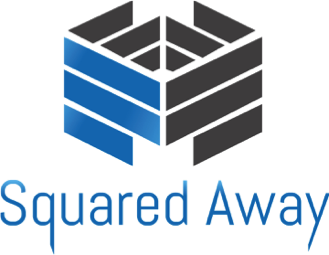I throw this question out there, not to bash my profession, I love my profession. But to see what the general view is, to generate debate and ultimately to provide some feedback for the people who matter. The property developers and end users who provide and operate these Smart Buildings.
To set the scene, client X signs a 15 year lease for 250,000ft/sq of commercial office space. The space is currently Cat A and the client will complete their own fit out.
Client X forms their external professional design team to complete the design and cost plan, procure the Main Contractor, manage the fit out, commissioning and handover. A pretty standard scope of works. Because we always do it that way!
Typically (and simplistically) the project goes as such:
- The architect engages with the business, establishes the requirements and designs the space.
- The M&E consultant designs the building services, containment, power requirements, etc.
- The client inputs into the design stages accordingly and the design and budget are signed off.
- A Main Contractor is appointed, with the coordinated design procured as packages.
- The physical fit out runs smoothly, is commissioned with all physical packages demonstrated and proved to meet their design brief.
- The project is handed over on time and to budget. (Don’t they always?!)
- Client X is happy, everyone goes for a post PC slap up meal. Well done team!
So, what is wrong with that perfect project? In the physical world, nothing.
But what about in the digital world where there are no physical site demarcation lines, no contractual documentation or national borders for that matter? In the physical world, the problem with package procurement remains one of coordination, contractual gaps or integrating system one (lighting control) with system two (AV).
In the digital world, none of those short term/ onsite problems exist. In the digital world interconnected systems within a Smart Building provide opportunity. Opportunity for business growth, for more efficient working, for retention of colleagues, to attract the right talent and to reduce Revenue costs. But also for cybercrime, business disruption or reputational damage.
Who is responsible for ensuring Client X is not exposed to such risks?
a) Client X
b) The design team
c) The Main Contractor and the Sub-Contractors
d) All of the above
The obvious answer is d. But in the real world this is never the case.
Buildings, smart or otherwise are only thought of as physical things. Most of the time little or no thought is given to the new digital DNA (inter connected systems) being built. Or that by procuring systems in packages to meet a set of design criteria, new technology driven vulnerabilities may be being created.
How is this possible? Simple, systems are commissioned and witnessed as silos: Electrical, lighting, air balancing, BMS, data cabling, AV, FF&E, security, the list goes on.
Within the commissioning schedules where are the digital coherence or cyber security packages? Who checks the UPS firmware is the latest version, that all building systems are behind the firewall and suitable network segregation is in place?
Who within a traditional design team is responsible for witnessing and signing off the “digital health” as part of the project’s commissioning and handover phase?
(In 2013 the retailer Target suffered a major cyber-attack. According to various publicly available reports the breach was via an HVAC chiller. For a detailed report click here).
Upon asking these questions, replies received can be boiled down to:
- The design team: It is the responsibility of Client X’s IT team/ the Main Contractor.
- Client X’s IT team: We are responsible for ‘core IT systems’, not building systems.
- The Main Contractor: We have delivered as per the contractual requirements.
- The FM provider: We can address this as Day 2 works.
This is not about pushing even more risk down onto the Main Contractor and the subbies. This is about driving change in the way we, the professional advisers and designers, deliver projects within the built environment.
We need to think of buildings in both the physical world and the digital world. We need to address the technological or digital world with the same importance we give to physical world elements such as working styles, BREEAM, energy and lighting efficiencies and physical security.

